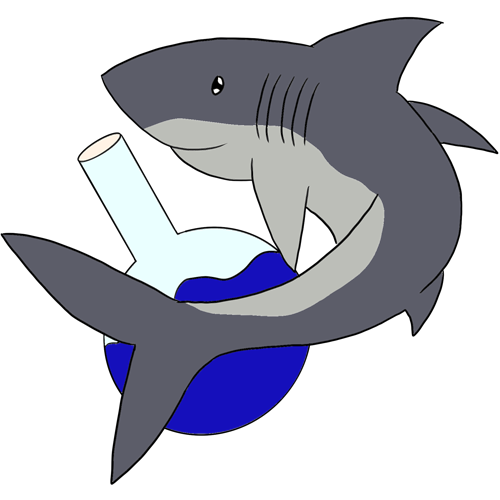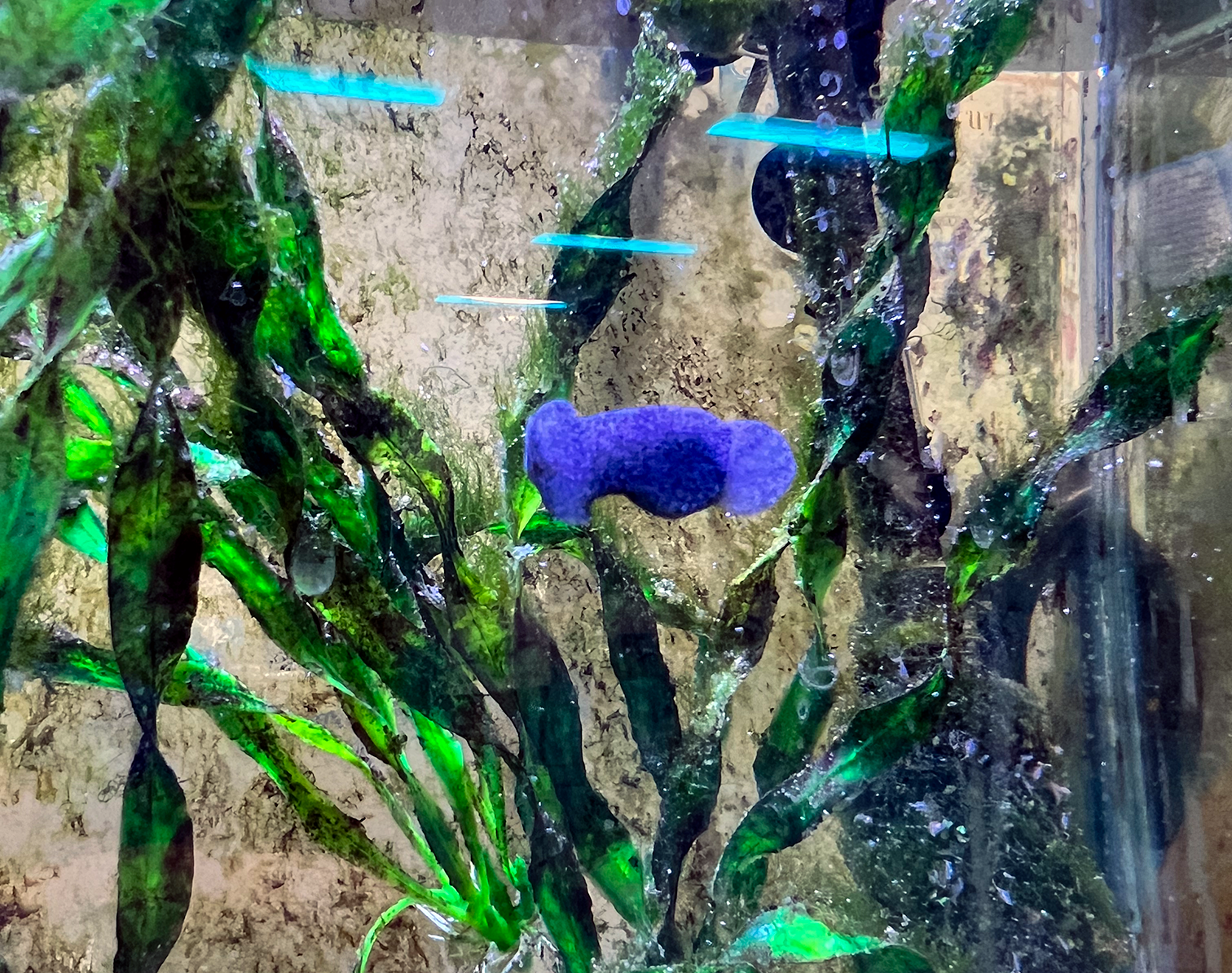Aristotle once theorized that living creatures could arise from nonliving matter and that this process was common. He hypothesized that maggots could arise from dead flesh and fleas come from dust. According to Aristotle, the generation of things like sea shells varies with the sea bed. Slime gave rise to oysters, sand to scallops, and hollows of rocks to limpets and barnacles. This theory was taken as scientific fact for two millennia before starting to be challenged in the 17th and 18th century.
In my classroom, I have an aquarium where I bring in animals from Sarasota Bay for my students to observe daily in the classroom. One neat thing about my aquarium besides bringing in wild juvenile animals is that I keep a strong thriving algae mat on the backside of the aquarium to help the nitrogen cycling process and provide food for my sea urchins.
While working and discussing an assignment one on one with my students, I looked over into my aquarium and saw an odd, black mass moving at the bottom of the glass. Upon closer inspection I was shocked and thrilled to see that the moving, black mass was a juvenile sea hare!
Sea Hares are part of the class Gastropoda and the clade Anaspidea. They are typically medium to large sized with an internal shell made of proteins. Their name comes from the rounded shape of their body and the two longer rhinophores that project upwards from their heads that somewhat resemble the ears of a hare. They also have a special shaped foot that has lateral projections called parapodia. Sea hares are herbivorous and found burrowing in soft sediment. Their skin contains a toxin that makes them largely inedible to predators. As a defense mechanism, sea hares have a colored ink where the pigments come from the types of algae that the sea hare eats. In Sarasota Bay, the mottled sea hare is found close to shore in the springtime.
Now, this sea hare was in my aquarium totally by accident. I spent several minutes trying to figure out how this tiny guy got into the tank in the first place. Then, it came to me, the sea urchin. I have brought two sea urchins into rotation of the tank animals in the last three months. The first sea urchin stayed in the tank for about a week in December, and the sea urchin currently in the tank has been in the tank for almost two months now. Either sea urchin must have brought in the sea hare as an egg to incubate and hatch in the tank. This pretty telling about the water quality of the tank to be able to hatch an egg and feed this little guy for several weeks to grow to the size it is now.
This serendipitous experience was an excellent way to reintroduce my students to sea hares, and to talk to them about the dangers of introducing species into new habitats. While in this case, the sea hare was introduced to a tank with the parameters and creatures that are common to its normal life in the wild, this is not always the case. Invasive species are nonnative species that are introduced to a habitat by human interaction whether intentional or accidental that causes damage to the ecosystem. For example, the lionfish is a highly invasive species that was presumed to be introduced by the aquarium trade to the Gulf Coast and is eating and reproducing without its typical bounds from the Indo-Pacific region. Zebra mussels have invaded freshwater aquarium owners through moss balls. Asterina starfish are a plague to saltwater aquarium owners, hitchhiking on live rock and coral. Nonnative species can occur anywhere! And they are so easy to introduce without even realizing it. There is a species of ctenophore native to North and South America that was introduced to the Caspian Sea from a ship’s ballast water!
What I found from this wonderfully random experience, is that students who had trouble understanding the ease of creating an invasive species and how dangerous they can be, started to have the concept click when shown how a new animal suddenly appears out of nowhere in a tank they have been looking at every day for months.
Teaching isn’t always about the planned lessons and activities, sometimes a little spontaneity goes a long way in teaching concepts that students have a hard time with or to reinforce ideas with real world examples. Lesson here… teaching is full of sea hare serendipity! You just need to learn how to embrace it!

